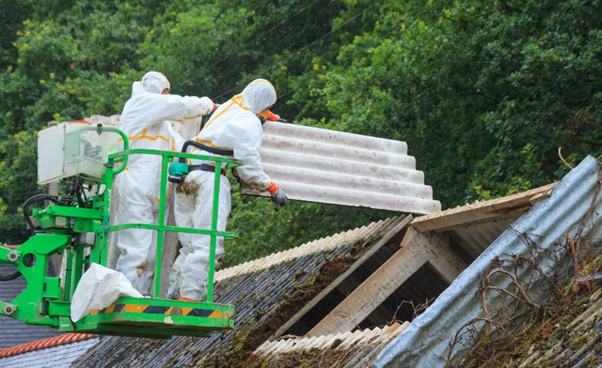The Environmental Impact of Safe Asbestos Removal: What You Need to Know

Understanding the covert hazards lurking within the walls of our homes or the infrastructure of our buildings can feel like uncovering a silent, forgotten danger. Consider, for a moment, the history of asbestos, once hailed for its fire-resistant properties and woven into a myriad of construction materials, only to be unmasked as a ticking environmental and health time bomb. This comprehensive exploration will unearth the true environmental and health consequences of asbestos as well as offer insights into the crucial practices of safe asbestos removal.
The Lurking Threat: A Brief Overview of Asbestos and Its Impact
Long recognized as a health hazard, asbestos is a naturally occurring mineral that was widely used in numerous construction and fireproofing materials. When these products degrade or are disturbed during renovations, the microscopic fibres can be dangerously inhaled, leading to severe lung diseases like asbestosis, lung cancer, and mesothelioma.
This silent killer doesn’t just harm humans—it also wreaks havoc on the environment. The production of asbestos-containing materials (ACMs) contributes to air and water pollution. When ACMs are not properly managed, these pollutants can escape into the environment, contaminating soil and water sources.
The Long-Term Environmental and Health Impact
On Humans
- Respiratory Issues: Inhalation of asbestos fibres can lead to serious respiratory problems, including chronic diseases such as asbestosis and more deadly conditions like mesothelioma and lung cancer.
- Long Latency Period: Diseases linked to asbestos exposure often have a latency period of several decades, making diagnosis and treatment challenging.
- Secondary Exposure: Family members of individuals working with asbestos may also be at risk through secondary exposure, further expanding the health impact beyond direct contact.
- Environmental Contamination: Improper disposal of asbestos can lead to soil and water contamination, adversely affecting wildlife and potentially entering the human food chain.
- Ecosystem Disruption: The presence of asbestos waste in the environment can disrupt local ecosystems, affecting both plant and animal life and reducing biodiversity.
- Regulatory Challenges: Despite known risks, the regulation and enforcement of safe asbestos removal and disposal practices vary significantly by region, complicating global efforts to mitigate its impact.
On the Environment
- Air and Water Pollution: The manufacturing process and improper disposal of asbestos-containing materials contribute significantly to air and water pollution, exacerbating climate change and harming aquatic life.
- Waste Management Challenges: The sheer volume of asbestos waste poses a significant challenge to waste management systems, often leading to hazardous materials being improperly handled or disposed of in landfills, affecting soil quality and groundwater.
- Energy Consumption: The processes involved in the safe removal, transportation, and disposal of asbestos require considerable energy resources, contributing to the overall carbon footprint and environmental degradation.
- Loss of Habitats: Disposal sites for asbestos waste can lead to the loss of critical habitats, as land is cleared to accommodate the growing need for waste management infrastructure.
- Public Health Risks: Communities located near asbestos disposal sites or buildings undergoing asbestos removal are at an increased risk of exposure, highlighting the need for stringent safety protocols and community awareness programs.
- Educational Gap: The lack of widespread education on the dangers of asbestos and proper disposal methods contributes to ongoing environmental and health risks.
Safe Asbestos Removal Practices
Implementing safe asbestos removal practices is critical to protecting both human health and the environment. To achieve this, certain procedures and precautions must be meticulously followed:
- Professional Assessment: Before any removal commences, a thorough assessment by certified asbestos removal specialists is essential. This allows for the identification of all asbestos-containing materials and the formulation of a precise removal plan.
- Legal Compliance: Adherence to local, state, and federal regulations governing asbestos removal is non-negotiable. This includes obtaining necessary permits and ensuring all removal activities are conducted within legal requirements to prevent legal ramifications and ensure public safety.
- Containment and Isolation: Areas containing asbestos must be fully contained and isolated to prevent the dispersion of fibres. This often involves sealing off the area with plastic sheeting and employing negative air pressure systems to capture airborne fibres.
- Use of Personal Protective Equipment (PPE): All individuals involved in the removal process must wear appropriate PPE, including respirators, gloves, and disposable coveralls. This equipment is crucial for preventing asbestos inhalation and skin exposure.
- Wet Removal Techniques: The application of water to asbestos-containing materials during removal reduces the release of fibres into the air. This method, known as wet removal, is one of the most effective strategies for minimizing airborne contamination.
- Proper Disposal: Asbestos waste must be double-bagged, clearly labelled, and disposed of at approved facilities. This ensures the hazardous material is handled appropriately, reducing the risk of environmental contamination.
- Decontamination Procedures: Following removal, thorough decontamination of the site and all tools or equipment used is paramount. This helps to eliminate any residual asbestos fibres and prevents their spread to other areas.
- Air Monitoring: Before, during, and after removal, air quality should be continually monitored for asbestos fibres. This is a critical step to ensure the safety of the removal process and the effectiveness of containment measures.
- Training and Awareness: Ensuring that all workers involved in asbestos removal are adequately trained and aware of the hazards and safety procedures is fundamental. Regular training sessions and refresher courses can help maintain high safety standards.
Key Learnings and Looking Forward
In conclusion, the adverse impact of asbestos on human health and the environment cannot be overstated. Safe asbestos removal is a vital practice for mitigating these risks. By understanding and adhering to proper disposal techniques and safety measures, we can protect present and future generations from the devastation wrought by this seemingly innocuous mineral.
The process of identifying and remedying asbestos in homes and structures is an essential part of responsible environmental stewardship. It’s not just about compliance with regulations; it’s about ensuring a safe and sustainable living space for everyone. The conversation and actions around asbestos safety must continue, and it’s a call to duty that each of us can answer.






